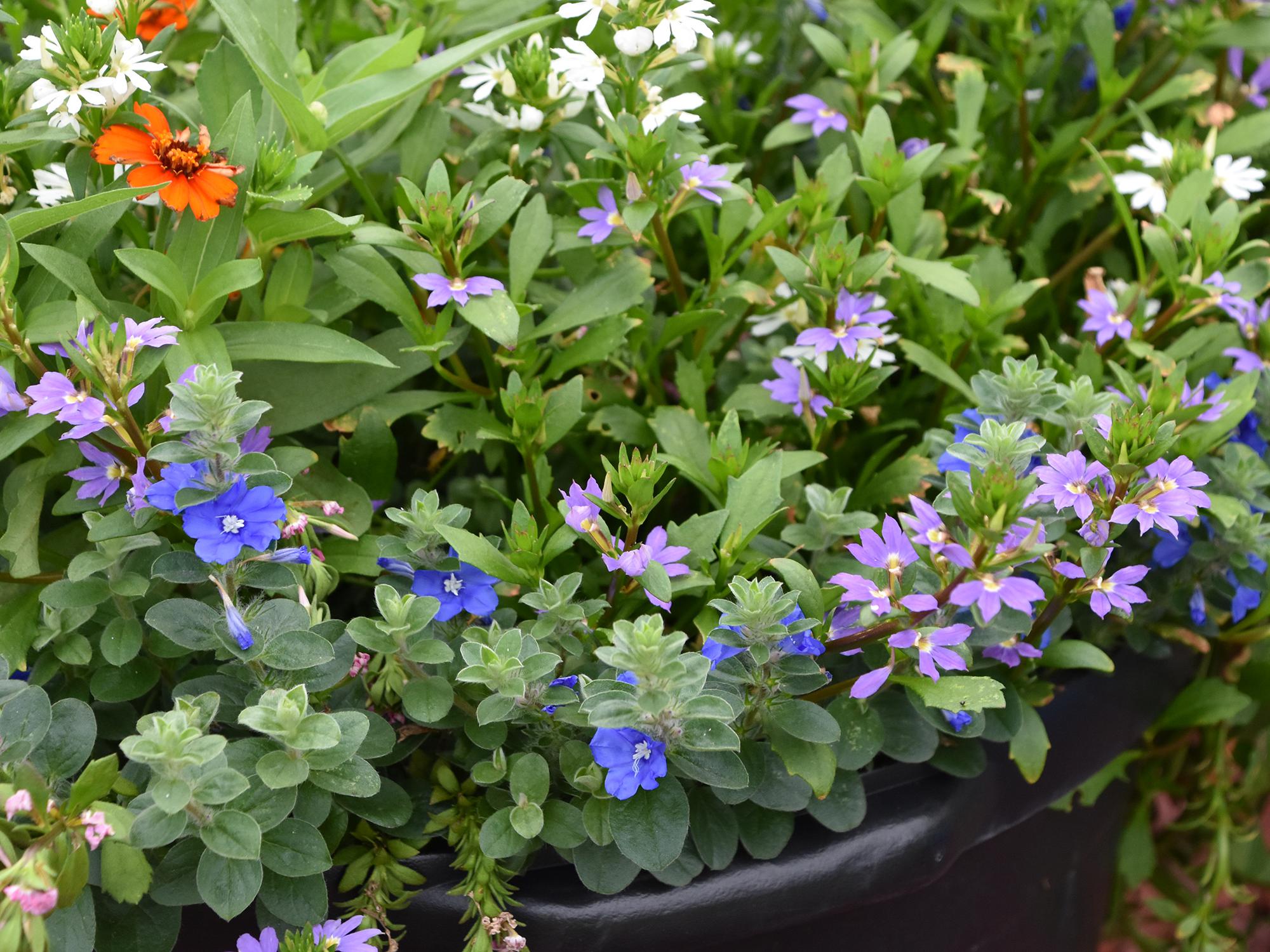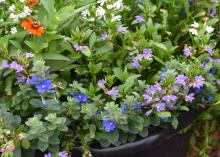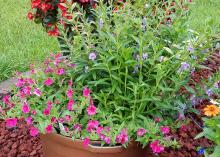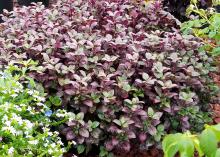Information Possibly Outdated
The information presented on this page was originally released on July 2, 2018. It may not be outdated, but please search our site for more current information. If you plan to quote or reference this information in a publication, please check with the Extension specialist or author before proceeding.
Combination containers offer flowering displays
I am a committed container gardener for both flowers and vegetables, but today I’m focusing on flowering plants. I firmly believe growing in containers is a fantastic way to enjoy a beautiful landscape and garden.
There are a couple of reasons for this, and one is that you don’t have to weed -- well, not as much. Also, container plants are ideal for small yards or for people who live in apartments and only have balconies for their plants. I’ve found that you can grow more flowering plants and harvest more vegetables in a lot less space with containers than in-ground vegetable gardens.
In my coastal landscape, as well as many locations in Mississippi and around the country, the soil conditions are less than ideal. You can improve your soil, but this can be challenging for busy gardeners. Growing in containers is a great and easy alternative to the work involved in amending the soil.
Plants growing in containers can even be placed on benches or tables to raise the garden higher, making it possible for those with accessibility concerns to enjoy gardening.
So, what is the best type of container to use? There are beautiful containers in all shapes, sizes and colors, and you can spend a lot of money on these. But I like using black nursery containers as an inexpensive alternative. I grow my garden plants in 15- and 25-gallon containers.
I’d like to share a few of the combination containers I’m maintaining this summer.
In one, I’ve combined two great summer plants: angelonia and Supertunia. Angelface Steel Blue angelonia makes a fantastic vertical accent. It has good branching with extra-large, silvery-lavender flowers. Supertunia Vista Paradise has gorgeous watermelon-pink flowers with salmon undertones. This plant fulfills its role as both a filler and a spiller.
In another large container, I’ve combined two plants that both have a spreading and trailing growth habit and let them intertwine. New Wonder scaevola, also called fan flower, is heat-loving, and I’ve planted it in blue, pink and white. The flowers make scaevola look delicate, but the plants are really tough.
New Wonder’s partner is Blue My Mind evolvulus. This plant has true blue flowers and is perfect for the western exposure in which I grow them. It produces flowers in great numbers, so it’s a relief that deadheading isn’t required.
Now, the last plant combination I’m going to tell you about is a lesson in why you must choose compatible plants. I thought a great combination would be the low-growing purple foliage of Plum Dandy alternanthera and the golden-yellow flowers of Golddust mecardonia. These two played well together for about two weeks. After that, the Plum Dandy totally took over the container, which, by the way, still looks great.
For the best growth and flowering performance in containers, always use a “soilless” peat-based mix. Potting mixes for containers need to be light and airy and drain well. Bagged mixes for container plants are often called potting or container mixes and have no soil at all.
These container mixes are found under a variety of trade names but are similar in their basic recipe. They are composed of organic components like peat moss, coir fiber or bark. They are readily available at your local garden center and come in bag sizes from quarts all the way up to multi-cubic feet.
The selection of materials and bags can be confusing, so pay careful attention to the information printed on the bag.
Even though it’s the middle of summer, there is still time to visit your favorite garden center and choose some plants for your own combination container.





